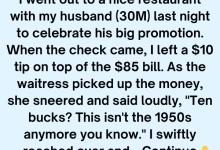These are the blunders you should avoid in order to be safe, ranging from using the wrong products to not leaving the appropriate ones on for long enough.
Rachel Sokol
You grab the bleach for a quick clean-up.
Bleach will do the task, but only if used properly. “Bleach often requires four or more minutes of contact time to eradicate viruses,” adds Ledoux. “I [really] recommend a 10- to 15-minute dwell period if you use bleach.” In contrast, alcohol concentrations ranging from 60 to 95 percent require only 30 seconds of contact time to deactivate COVID-19.

You use a disinfectant with a low alcohol concentration
Eco-friendly products are great, but these cleaning options might not always have a high enough alcohol or bleach concentration to kill COVID-19. That’s why reading labels is so important, especially now. In terms of alcohol-based products, you should be looking for products that have at least a 70 percent alcohol concentration. If you can’t find your normal go-to products? “Opt for cleaning alcohol itself, which is normally sold in pharmacies,” advises Ledoux. “The content is important because the higher concentration kills the coronavirus in less than one minute. Plus, it’s effective, doesn’t leave a residue and evaporates.”

You roll your eyes at DIYs
Today, many disinfectants are sold out as we try to keep our homes safe and clean. But don’t give up. There are some DIY recipes out there that can help you. “If you’re in a pinch or short on product, rubbing alcohol, diluted with water, will work,” says Lake. “Use a 50/50 dilution ration of 50 percent water and 50 percent rubbing alcohol.”

You don’t read the small print.
According to Ledoux, most buyers make the error of failing to read a product’s instructions on how to use it. “[Professional cleaners] adhere to the label.” “Manufacturers conduct significant testing and base their directions on that,” she says. “Many people do not read those labels, and as a result, they do not provide enough dwell time for the product to be effective.” If we apply a disinfecting spray for two to three minutes but wipe it off after 10 seconds, the cleaning and sanitizing impact will be negligible, if any.” For instance, these are the instructions on a can of Lysol: “Clean the surface first.” Spray the surface until it is completely wet. Allow for a 2-minute wait before wiping.”

You ignore your home’s biggest problem areas
“While floors get dirty, we typically aren’t going to get sick from dirty floors,” says Trisha Lake, owner of TLC Cleaning in North Dakota and Minnesota. “Light switches and doorknobs are way more likely to get us sick. Break out those toothbrushes and start scrubbing those light switches two-plus times per week.”

You use disinfecting wipes instead of a spray
“Wipes are convenient to keep in your purse, briefcase or backpack for use when you are away from home and need to touch surfaces like shopping carts, door handles and so forth,” explains Jim Epstein, CEO of Intercon Chemical & Clearly Better, which makes PURE Hard Surface Disinfectant. “When at home, though, it is best to use a spray disinfectant. Wipes become dirty quickly, and you can overload a wipe, so its disinfectant material loses effectiveness.”

You don’t wash your hands before cleaning
Guess what—you don’t just need to wash your hands when you come in from outside. You need to wash them before you start cleaning. Otherwise, you’re introducing germs into what should be a clean environment. So, before you get started, Lake recommends washing your hands for 20 seconds with soap and water. Then put on a pair of disposable gloves—it’s not just to protect your delicate hands from harsh chemicals. “When cleaning, you’re going to come in to contact with many different germ-ridden surfaces,” says Lake, so this gives you some extra protection.

You walk straight by Magic Erasers.
Mr. Clean Magic Erasers are your new best friend. They not only eliminate errant marks on your walls when nothing else can, but they may also help with disinfection. “While they do not disinfect, they make it simpler to remove [the] filth off surfaces so that a disinfectant may do its job,” Lake explains. “I adore Magic Erasers and use them on a daily basis.” You can use them to clean high-contact areas such as counters, toilets, and door handles before applying your disinfectant of choice.

You use Windex everywhere
Glass cleaner is good for windows, mirrors, and some other glass surfaces, but glass cleaners are not disinfectants, according to Epstein. It’s not intended to kill germs. “My Big Fat Greek Wedding aside, it’s just a glass cleaner and not a disinfectant,” he says. “When you need to disinfect, especially for ‘high-touch surfaces,’ use a low-toxicity, people-friendly, hospital-grade disinfectant that can be used to both clean and disinfect those hard surfaces: door handles, light switches, bathroom fixtures, and handles, kitchen surfaces, and more.”

You don’t wash your clothes in hot water
When it comes to your laundry, every load needs to be washed on hot right now, says environmental-toxin expert Tonya Harris, founder of Slightly Greener. In fact, studies show that water needs to be over 140 degrees Fahrenheit to kill viruses and pathogenic bacteria. To save your clothes from shrinking, Harris recommends drying clothes on normal settings or hanging to dry. Also, she adds, make sure that clothes are 100 percent dry before putting them away “so more germs and bacteria don’t grow on your damp fabric.

Baby wipes are used on everything, not only babies.
You are not alone if you use baby wipes to clean surfaces in your home. It’s popular parenting and cleaning tip, but keep in mind that those wipes aren’t sanitizing anything. “They have gentle components because they are used on the skin, as well as hydrating compounds that are supposed to soothe,” Harris explains. “While they are useful for general rapid cleaning, they are not intended to destroy bacteria and viruses.” She goes on to say that the same is true for basic cleansing wipes. The cosmetics industry regulates these wipes, whereas the United States Environmental Protection Agency regulates wipes that disinfect “inanimate” surfaces such as a mobile phone (EPA). Just so you know, baby wipes can peel or harm the “oleophobic” coating of phones, so don’t do this in a pinch.








